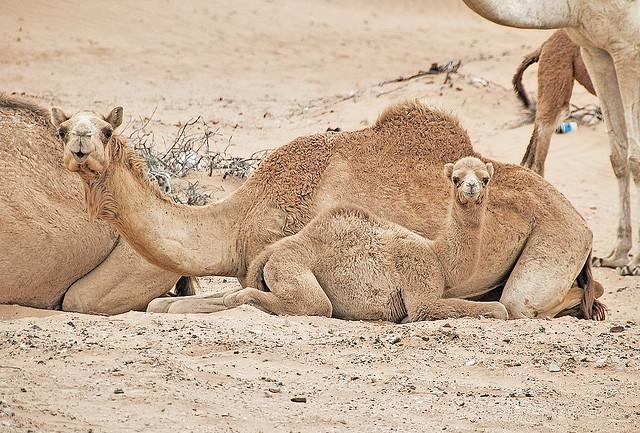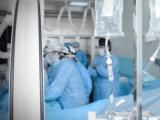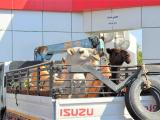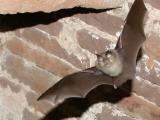Saudi Arabia reported two more MERS-CoV cases today, raising its total to 950, while a new study shed more light on infections in camel calves and suggested that avoiding them may be a good way to lower the risk of contracting the virus.
In addition, the World Health Organization (WHO) added some details on 18 previously reported cases in Saudi Arabia and 1 in Qatar, revealing that 4 of the cases were in healthcare workers (HCWs) and 4 other patients may have contracted the virus in hospitals.
More cases in Riyadh
The two latest cases, both in women, are in Riyadh, the epicenter of recent MERS-CoV (Middle East respiratory syndrome coronavirus) activity.
One patient is a 62-year-old Saudi who has preexisting disease and is in critical condition, the Saudi Ministry of Health (MOH) said. The other one is a 45-year-old foreign HCW who was previously healthy and is in stable condition.
The HCW was exposed to the virus in a healthcare setting, and the possibility of such exposure is being investigated in the other case, the MOH said. Neither patient was recently exposed to animals or to MERS patients in the community.
The two new cases raise Saudi Arabia's MERS-CoV count this month to 30. The cumulative total of 950 cases since 2012 includes 412 deaths, 26 patients still under treatment or observation, and 512 who recovered.
Young camels often infected
Meanwhile, a new study of MERS-CoV in camels suggests that the virus primarily or exclusively infects calves and that avoiding contact with camels less than 2 years old may help prevent human cases. The study was published yesterday in Emerging Infectious Diseases.
A team of researchers from the United Arab Emirates (UAE), Germany, and Hong Kong looked for MERS-CoV in blood and nasal swab samples from dairy, racing, and breeding camels on three UAE farms situated 20 to 40 kilometers apart. The senior author is Christian Drosten, MD, a virologist at the University of Bonn.
Serologic testing showed evidence of MERS-CoV antibodies in more than 96% of camels over 2 years old. MERS-CoV RNA and actual virus isolates were found only in camels less than 4 years old, and they were significantly more common in calves (under 1 year old) than in "subadults" (2 to 4 years old).
To understand MERS-CoV in calves, the researchers studied 24 cow-calf pairs from the breeding flock, in which the mothers were at least 12 years old and the calves were 4 to 6 months old. They found that all the mothers had MERS-CoV antibodies but no signs of active infection.
In contrast, the virus was found in 11 of 15 calves on the first sampling, but 8 days later only 4 of 15 still harbored the virus, though all 15 had antibodies. This pattern suggested "a recent infection peak that was already on the decline at the time of sampling," the authors wrote.
They also ran a phylogenetic analysis of nine MERS-CoV isolates, which belonged to three lineages. It appeared that one of these lineages was closely related to viruses circulating in eastern Saudi Arabia, and it was learned that some of the camels in the sampled flock had been moved temporarily to Saudi Arabia for grazing.
Among their conclusions, the researcher said that because the cows were not infected before their calves were, "perennial persistence of MERS-CoV in adult dromedaries is unlikely." The findings also imply that shedding of the virus by individual camels doesn't last very long.
The authors further wrote, "The restricted and highly compartmentalized social structure of livestock camels would provide population niches in which viruses can differentiate in isolation after bottleneck-type transmission events. This situation holds promise for control of the spread of MERS-CoV through flock management practices, and it also suggests a rather simple way of avoiding camel-to-human transmission by avoiding camels less than 2 years of age."
They added that camel calves are generally separated from their mothers at 12 months of age, when they are still likely to be infected with MERS-CoV. Humans normally have contact with calves only after this separation. Thus, postponing separation form the mother until the calves are older might reduce the risk for camel-to-human MERS-CoV transmission, the researchers said.
WHO profiles recent cases
In other developments, the WHO reported yesterday on 18 MERS cases that were reported by the MOH from Feb 26 to Mar 2. Five cases were fatal.
The patients consisted of 12 men and 6 women, with ages ranging from 34 to 91. Six were listed in critical condition, and seven were stable. Of the 18, 14 were from Riyadh, 2 from Buraydah, 1 from Al-Jawf, and 1 from Khobar.
Four patients were HCWs, and had some resulting possibility of occupational exposure, the report said. Before their illnesses, another four (who were not HCWs) had been treated in hospitals where MERS patients were treated. Two other patients were household contacts of MERS patients, while eight had no history of exposure to known risk factors.
In a separate statement, the WHO offered a few new details on the MERS case in a 69-year-old man in Qatar. It said the man, who was still in critical condition, has had frequent contact with camels and often drinks raw camel milk. He first sought medical care at a hospital emergency department on Mar 3 and then returned 3 days later after his symptoms worsened.
The WHO said its count of confirmed MERS-CoV cases has reached 1,060, with at least 394 deaths.
See also:
Mar 12 MOH statement
Mar 11 Emerg Infect Dis report
Mar 11 WHO statement on 18 Saudi cases
Mar 11 WHO statement on Qatar case






















